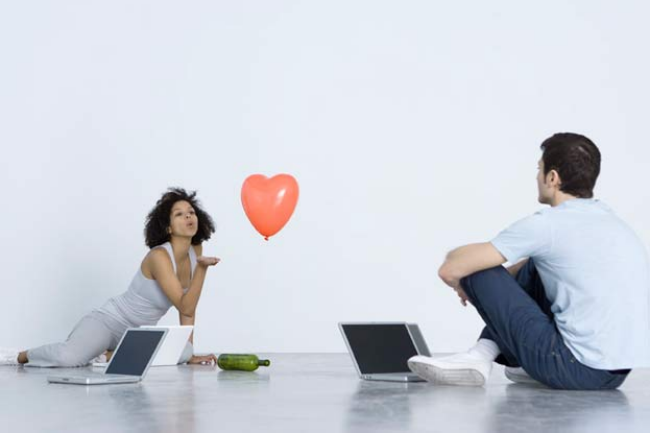
I’m actually pretty lucky – every time I recount how I met my husband online, people have been nothing but positive. However, when I do the obvious and encourage them to go for it, their responses are along the lines of, “What? Me? Ha, I’d never do online dating. It’s just not for me. I find it too creepy, you never know what kind of person is on the other side of the screen! I’m not that desperate to meet someone.” Underhanded Debbie Downer remarks aside, here’s a news flash: Dating online does not make you desperate … it makes you a normal human being.
According to a new report on online dating and relationships released by the Pew Internet and American Life project, one in 10 Americans have turned to online dating via Web or mobile app, and out of the 66 percent who have moved on to in-real-life dates, 23 percent have gone the distance and have entered into long-term relationships and yes, successful marriages. This is a major improvement from results taken from a similar survey back in 2005, when only 43 percent would actually go through with dates and only 17 percent ended in relationship bliss.
Still think online daters are desperate? You are not alone – 21 percent of Internet users are still refusing to keep up with the times and agree that online dating sites are reserved for the hopeless. However, recent statistics for this demographic show an eight percent decline from a survey taken eight years ago, which means that as technology advances, more conservatives are opening up to the idea of finding real love online.
While going out on dates with people through conventional (offline) methods is still widely practiced, the number of people who’ve met their significant others through the Internet has doubled since 2005. According to Pew Internet’s research, it’s safe to assume that five percent of all committed relationships in the country today are all thanks to dating apps and websites.
If you’re secretly tired of hearing people humblebrag about their online connections, you could be out of luck. “Familiarity with online dating through usage by friends or family members has increased dramatically since our last survey of online dating in 2005,” according to the report. “Some 42 percent of Americans know someone who has used online dating, up from 31 percent in 2005. And 29 percent of Americans now know someone who met a spouse or other long-term partner through online dating, up from just 15 percent in 2005.” At this point, you’d have to hide under a rock to avoid hearing of an acquaintance’s attempt at digital dating.
For those considering diving into online dating, you should know that not everyone gets a great first time. Over 50 percent of online daters believe that the person they’re talking to online have fabricated dating profiles, and 28 percent (most of them are female) have received messages that verge on harassment. (What this really means is that Catfish just got renewed for 30 more seasons.)
At the end of it all, those success stories you keep hearing from acquaintances may actually help. When talking to a potential partner online, use your friends’ valuable tips along with a large dose of online smarts and extreme precaution.


